July 1, 2016
By Joan Grabel
Although not a complete list of all plants in bloom, this article will feature a few to look for while in the gardens.
Featured in the Botanical Garden at Museum Hill:
For a SUMMER SYMPHONY OF PURPLE you can use all the plants listed, paying attention to their height and size, and placing in patterns to achieve the style desired.
IN YOUR GARDEN
For a Contemporary look:
Placing plants in a structured mass or in a repetitive minimal pattern will give your garden a contemporary style. The key is to place them in a rectilinear or minimal pattern with an intentional rhythm. For example, placing ‘Munstead’ lavender in a rectilinear pattern with a row of the shorter ‘Violet Cloud’ skullcap in front would be dynamic.
Scientific name: Lavandula angustifolia ‘Munstead’
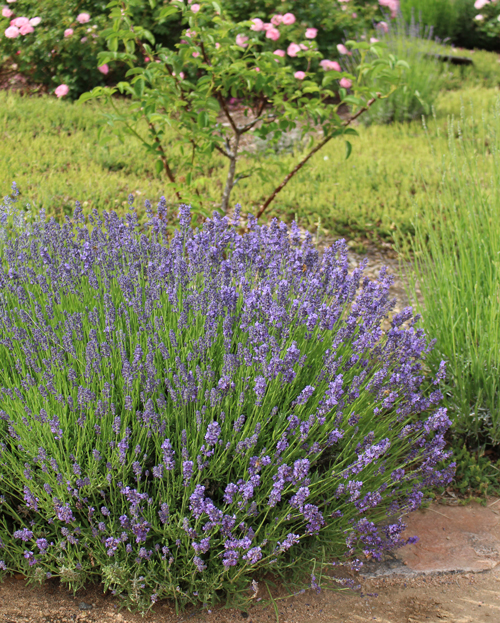
Lavandula angustifolia ‘Munstead’ (Photo Cristina Salvador)
Common name: English lavender ‘Munstead’
Habit: 1 to 1.5 feet high, 1 to 1.5 feet wide
Hardiness: Zones 5 to 8
Scientific name: Scutellaria x ‘Violet Cloud’
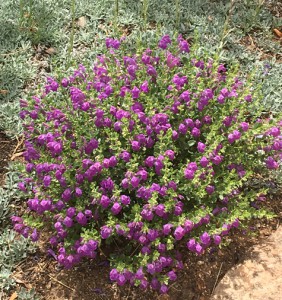
Scutellaria x ‘Violet Cloud’ (Photo Joan Grabel)
Common name: Violet Cloud skullcap
Habit: 6 in high and 12 in wide
Hardiness: Zones 4-8
For a Country Cottage look:
Selecting 3 to 5 plants and placing together in a repeating pattern along a winding path or in the body of the landscape will give a country style. You can achieve an English garden feel with low water lush plants as seen right now in the Rose & Lavender Walk. The English ‘Munstead’ lavender, ‘Hidcote’ lavender, and the French ‘Grosso’ lavender are blooming and adding a stunning contrast of color and texture to the roses. The ‘Munstead’ is a shorter compact lavender with dark blue-lavender flowers and the ‘Hidcote’ is little taller with light lavender flowers. The ‘Grosso’ is taller, with grey foliage and light blue-lavender flowers. Also the Mojave sage is a stunning addition to the low water lush garden.
Scientific name: Lavandula angustifolia ‘Hidcote’
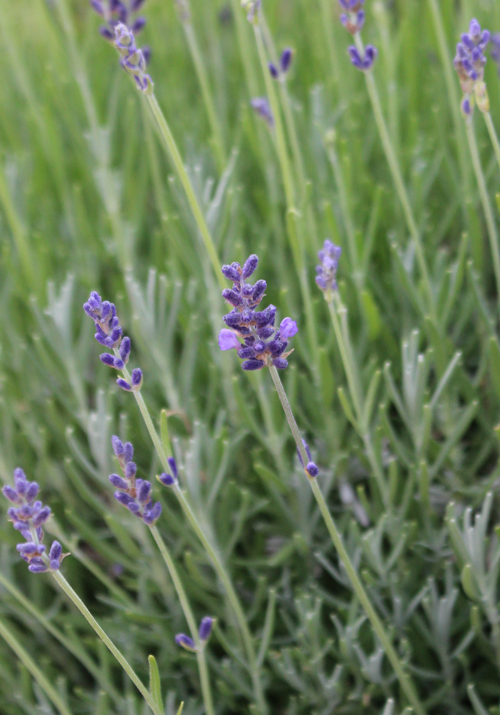
Lavandula angustifolia ‘Hidcote’ (Photo Cristina Salvador)
Common name: Hidcote lavender
Habit: 1-1.5 ft high and wide
Hardiness: Zones 5-8
Scientific name: Salvia pachyphylla
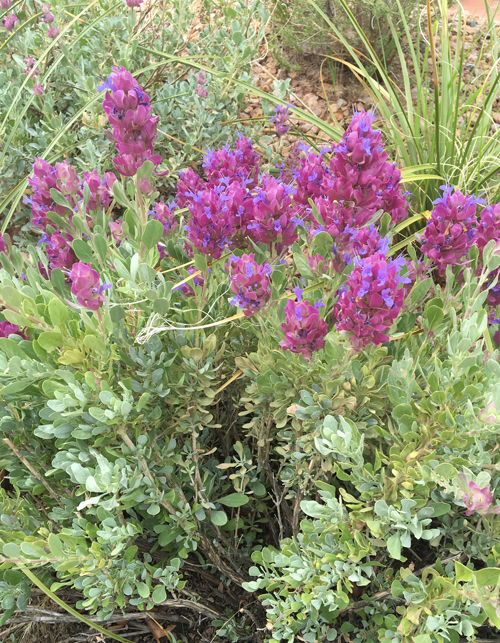
Mojave sage (Photo by Joan Grabel)
Common name: Mojave sage
Habit: 36 inches tall, 24 inches wide
Hardiness: Zones 5-9
Scientific name: Lavandula × intermedia ‘Grosso’
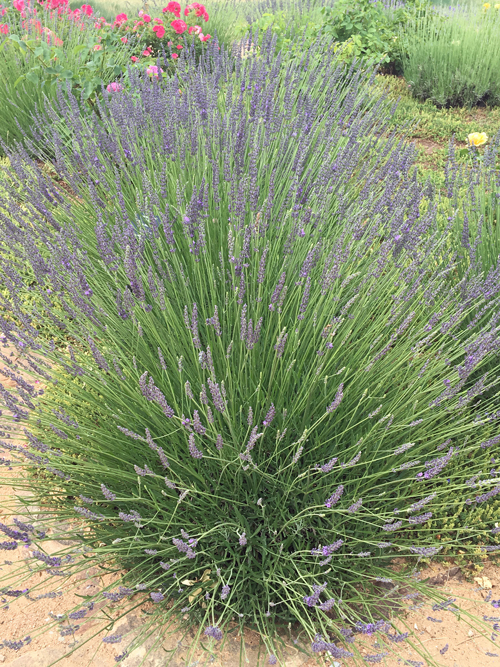
Lavandula × intermedia ‘Grosso’ (Photo by Joan Grabel)
Common name: Grosso lavender
Habit: 2-2.5 ft high and wide
Hardiness: Zones 5-8
Container:
Geraniums in multiple containers would be impressive. Always best to have at least 2 or more containers with the same plant or arrangement.
Scientific name: Geranium ‘Gerwat’ ROZANNE
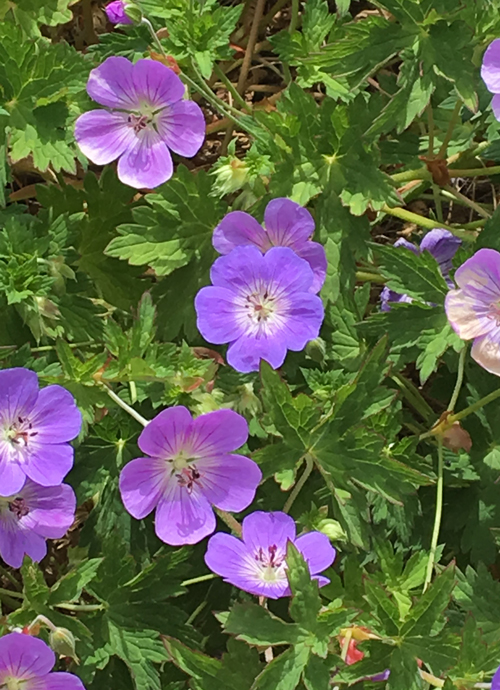
Geranium ‘Gerwat’ ROZANNE (Photo Joan Grabel)
Common name: cranesbill geranium, ROZANNE geranium
Habit: 1 to 1.5 feet tall, 2 to 3 feet wide
Hardiness: Zones 5 to 8
*Tolerates partial shade
Scientific name: Geranium sanguineum ‘New Hampshire Purple’
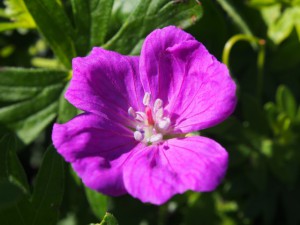
Geranium sanguineum ‘New Hampshire Purple’ (Photo: Kate Willet)
Common name: cranesbill geranium ‘New Hampshire Purple’
Habit: 4-6 inches in height, can spread 10-12 inches
Hardiness: Zones 3-8
The ART’S SEEDLESS™ desert willow is one of my favorite trees. Flowering now it can be used as a single specimen or planted in mass would be beautiful.
Scientific name: Chilopsis linearis ART’S SEEDLESS ™
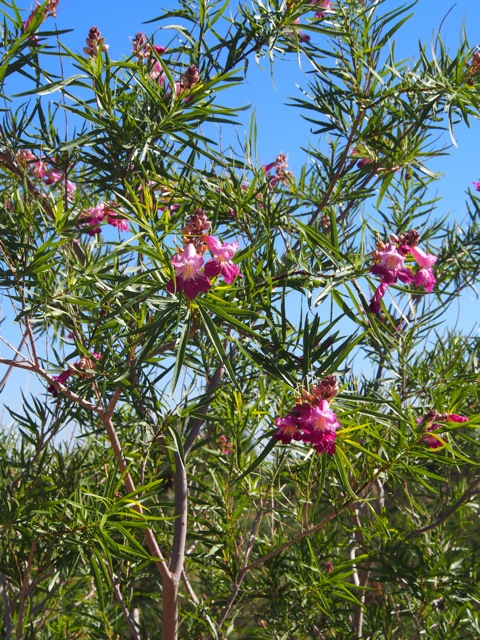
ART’S SEEDLESS™ desert willow (Photo Kate Willet)
Common name: ART’S SEEDLESS™ desert willow, desert catalpa
Habit: height and width of 20 to 25 feet
Hardiness: Zones 5 -11
Joan Grabel Biography
Joan Grabel is a landscape designer in Santa Fe, NM and Los Angeles, California


